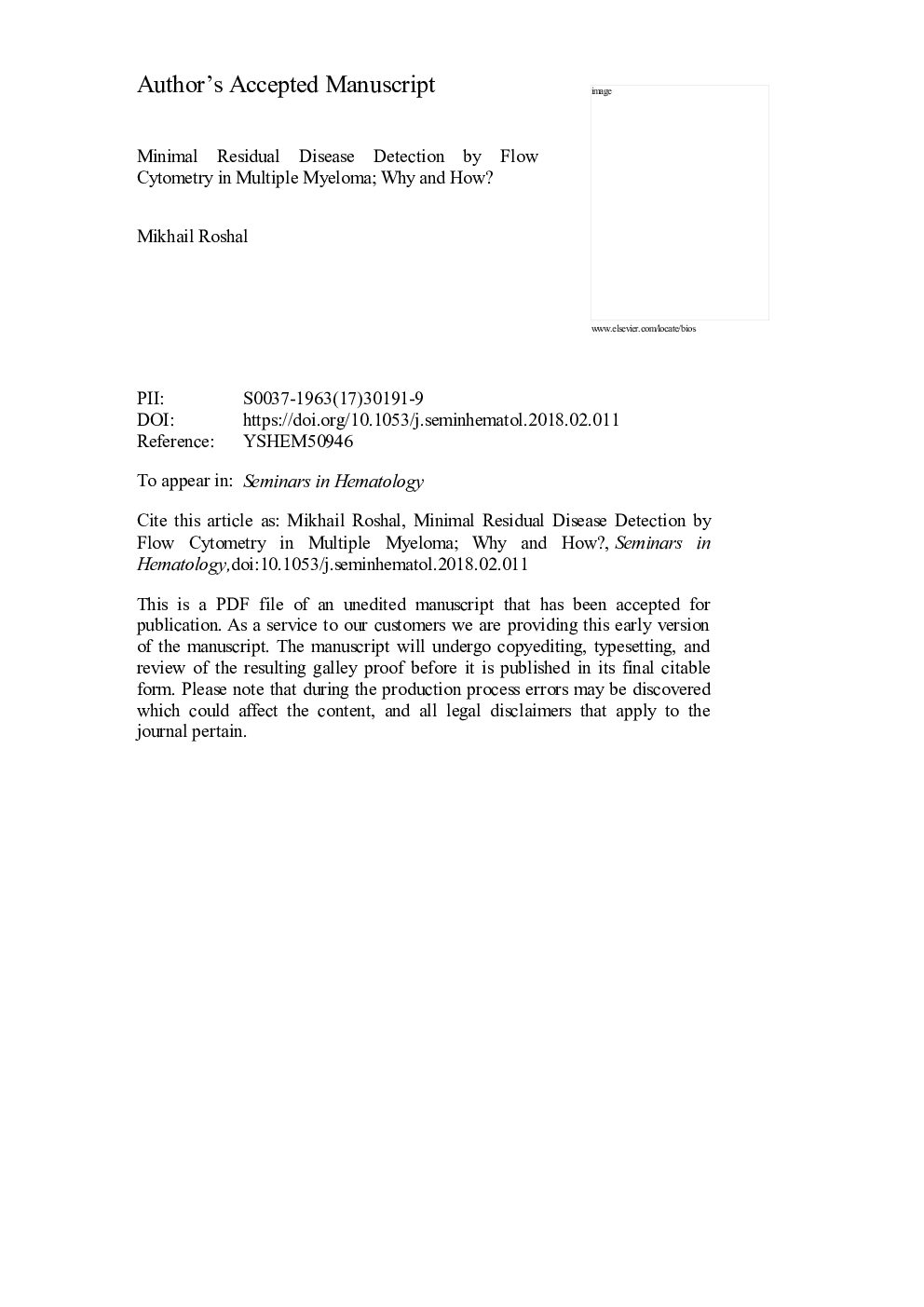| Article ID | Journal | Published Year | Pages | File Type |
|---|---|---|---|---|
| 8734802 | Seminars in Hematology | 2018 | 19 Pages |
Abstract
The outlook for myeloma patients has steadily improved with the introduction of newer drug combinations in recent years. Unlike older therapies that largely achieved only modest levels of neoplastic clone reduction, the newer drug combinations have led to deeper suppression of myeloma clones in most patients. Frequently the neoplastic clones become undetectable with traditional disease evaluation approaches. Recent studies using ultrasensitive disease monitoring have demonstrated that patients with disease undetectable by traditional techniques show wide heterogeneity in disease levels varying by several orders of magnitude. Moreover, measurement of the depth of disease suppression even at very low level has emerged as the most powerful prognostication tool in myeloma. Minimal (or measurable) residual disease (MRD) evaluation has also been proposed as a relevant tool in assessment of drug efficacy and in selection of further therapeutic options. In the face of the robust MRD measurement utility data, it has become critical to develop widely applicable disease monitoring techniques that can be applied to more patients in a variety of clinical setting. Both DNA-based and flow cytometry-based approaches have been successfully developed for this purpose achieving sensitivity approaching 1 neoplastic cell in a million. This review article focuses on the theoretical and practical aspects and challenges of deep MRD monitoring in myeloma by flow cytometry. Challenges of flow cytometric disease monitoring in the era of antigen-directed therapy are also discussed.
Related Topics
Health Sciences
Medicine and Dentistry
Hematology
Authors
Mikhail MD, PhD,
